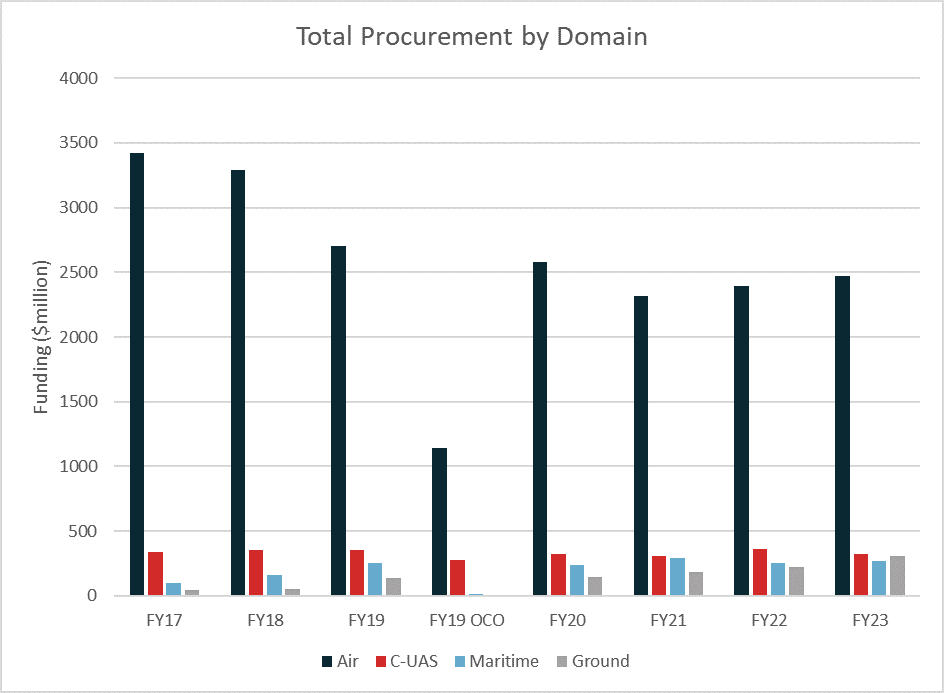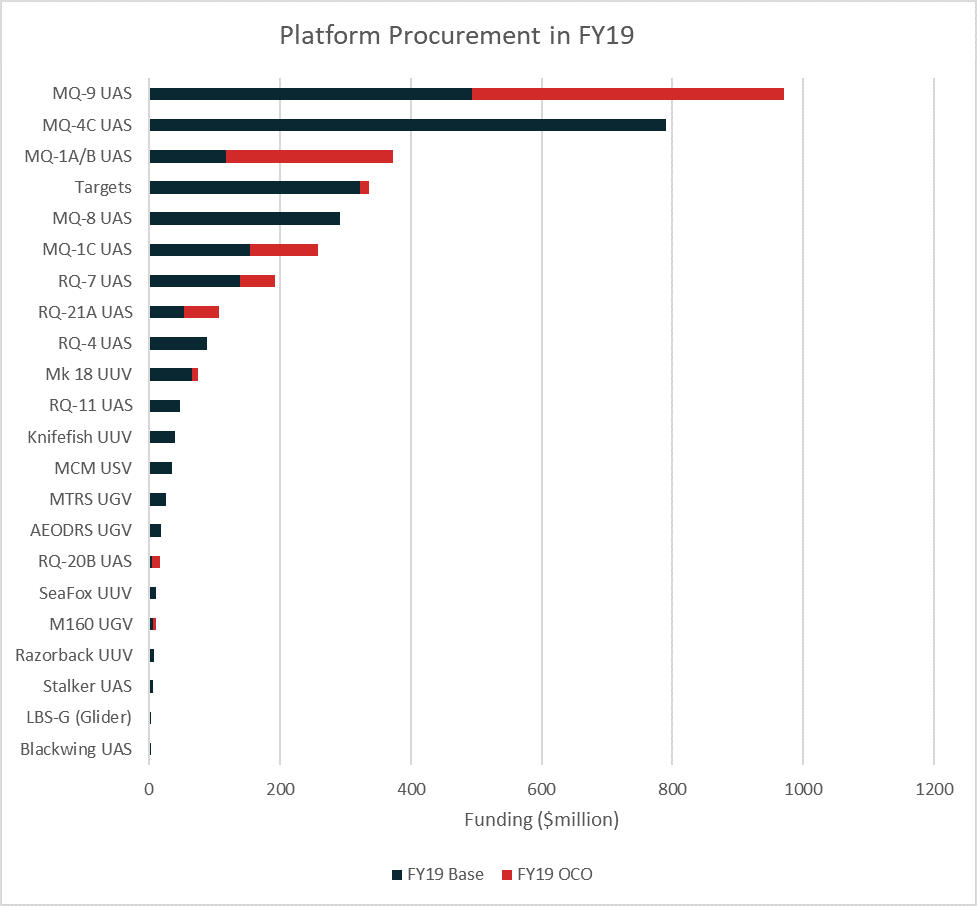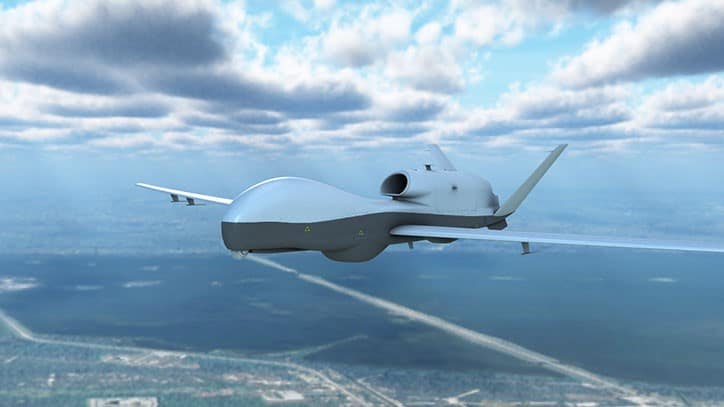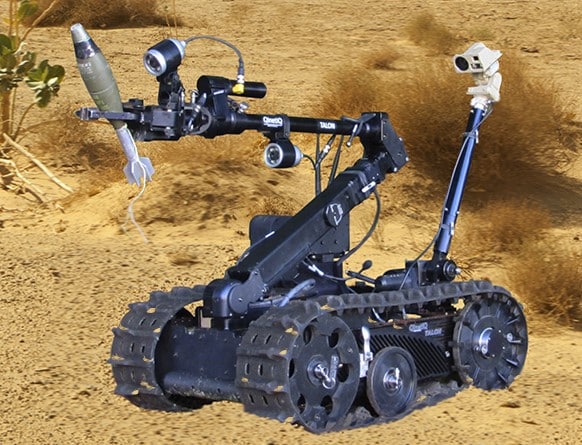The President’s Budget for 2019 was released in February detailing the requested funding for programs across all services in the United States Department of Defense (DoD). In this initial overview, we will explore the procurement request for unmanned systems.

The requested defense funding for unmanned systems procurement in FY19 totals approximately $4.7 billion (including Overseas Contingency Operations (OCO)). This represents all unclassified programs from the US DoD. The three core services – Army, Navy, and Air Force – show increases in funding from FY18 to FY19 with the Army showing the largest growth followed closely by the Navy.

Separating the budget by domain we see that most of the funding request is for Unmanned Aerial Systems (UAS) and related equipment. Support for Counter-UAS (C-UAS) technologies saw the next largest funding request from FY17 to FY23 followed by unmanned maritime systems and ground robotics.

The requested platform procurement in FY19 is dominated by UAS with the MQ-9 Reaper (USAF/SOCOM) topping the list at $970 million. 29 total MQ-9 aircraft are being requested in FY19, 21 of which are for OCO with a unit cost of $14.8 million each. Other funding programs that are factored into the total include the communication infrastructure that supports operations, vehicle upgrades, spares and repairs, payloads (Gorgon Stare, bombs/munitions, etc.), and other production charges. The MQ-9 is a large weaponized aircraft used by the US Air Force and Special Operations Command and as is evident by the substantial OCO request continues to play a critical role in the ongoing war on terrorism.

The MQ-4C Triton UAS (USN) has the next highest funding request with a base FY19 total of $790 million. Most of this is attributed to the three Low Rate Initial Production (LRIP) aircraft at $68 million each with a flyaway cost of $400 million for all three. Other hardware consists of systems for navigation, command, control, networking, and communications as well as ground support equipment, spares and repairs, etc. The MQ-4C provides persistent ISR data in littoral and maritime environments for the US Navy.

The Mk 18 UUV has the largest funding request for unmanned maritime vehicles with $75 million in FY19. The Mk 18 family of systems (FOS) consists of the mod 1 (modified REMUS 100 UUV) and mod 2 (modified REMUS 600 UUV) and are used mainly for Mine Counter Measure (MCM) operations by the US Navy. Over 95 percent of the total Mk 18 funding is for the mod 2.

With respect to Unmanned Ground Vehicles (UGVs), the Man Transportable Robotic System (MTRS) secured the largest funding request at $26 million. MTRS provides enhanced protection to the EOD soldier with the ability to render safe and dispose of explosive ordnance (EO) and improvised explosive devices (IEDs). Contractors for this system include QinetiQ with a FY19 request of two Talon 5a at $156,000 each and Endeavor Robotics with a FY19 request of 43 MTRS Inc II at $120,000 each.

Each of the three core services have requested funding to obtain systems that support C-UAS operations with a total estimated cost of $356 million across all programs. Looking at specific programs, US Navy Physical Security Equipment has the largest C-UAS request at over $71 million in FY19 followed by the US Air Force Physical Security System at $60 million. Details for many of the C-UAS programs are only available at a higher classification level.
This overview of unmanned systems procurement in FY19 is the first of a series of reports. Additional research is being completed for Research Development Testing & Engineering (RDT&E) funding and a comprehensive summary of each relevant program will follow.
